 W
WAraucaria angustifolia, the Paraná pine, Brazilian pine or candelabra tree, is a critically endangered species in the conifer genus Araucaria. Although the common names in various languages refer to the species as a "pine", it does not belong in the genus Pinus.
 W
WThe baiji is a possibly extinct species of freshwater dolphin, and is thought to be the first dolphin species driven to extinction due to the impact of humans. Since Baiji means 'white fin' in Chinese, it means 'white-finned dolphin'. In China, the species is also called the Chinese river dolphin, Yangtze river dolphin, Yangtze dolphin and whitefin dolphin. Nicknamed the "Goddess of the Yangtze", it was regarded as the goddess of protection by local fishermen and boatmen. It is not to be confused with the Chinese white dolphin or the finless porpoise.
 W
WFour-toothed whales or giant beaked whales are beaked whales in the genus Berardius. They include Arnoux's beaked whale in cold Southern Hemisphere waters, and Baird's beaked whale in the cold temperate waters of the North Pacific. A third species, Berardius minimus, was distinguished from B. bairdii in the 2010s.
 W
WThe Burmese star tortoise is a critically endangered tortoise species, native to the dry, deciduous forests of Myanmar (Burma). It is close to extinction in Myanmar, as it is eaten by the native Burmese.
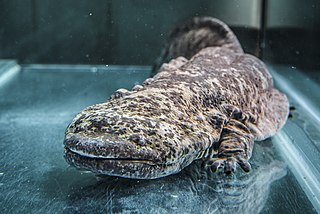 W
WThe Chinese giant salamander is one of the largest salamanders and one of the largest amphibians in the world. It is fully aquatic and is endemic to rocky mountain streams and lakes in the Yangtze river basin of central China. Either it or a close relative has been introduced to Kyoto Prefecture in Japan and to Taiwan. It is considered critically endangered in the wild due to habitat loss, pollution, and overcollection, as it is considered a delicacy and used in traditional Chinese medicine. On farms in central China, it is extensively farmed and sometimes bred, although many of the salamanders on the farms are caught in the wild. It has been listed as one of the top-10 "focal species" in 2008 by the Evolutionarily Distinct and Globally Endangered project. The Chinese giant salamander is considered to be a "living fossil". Although protected under Chinese law and CITES Appendix I, the wild population has declined by more than an estimated 80% since the 1950s. Although traditionally recognized as one of two living species of Andrias salamander in Asia, the other being the Japanese giant salamander, evidence indicates that the Chinese giant salamander may be composed of at least five cryptic species, further compounding each individual species' endangerment.
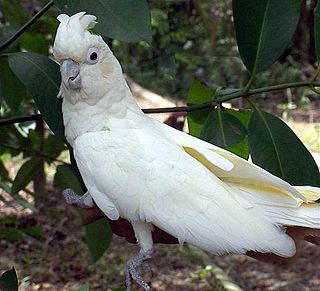 W
WThe red-vented cockatoo, also known as the Philippine cockatoo and locally katala, abukay, agay or kalangay, is a critically endangered species of cockatoo that is endemic to the Philippines. It is roughly the size and shape of the Tanimbar corella, but is easily distinguished by the red feathers around the vent.
 W
WPennant's colobus or Pennant's red colobus is a species of tree-dwelling primate in the family Cercopithecidae. It is endemic to tropical Central Africa. Three subspecies have traditionally been recognised but its distribution is peculiarly disjunct and has been considered a biogeographical puzzle. with one population on the island of Bioko, a second in the Niger River Delta in southern Nigeria, and a third in east-central Republic of Congo. It is found in rainforests and marshy forests. It is threatened by habitat loss and hunting for bushmeat. One subspecies, bouvieri, is rated as critically endangered; although it was last photographically documented in 2015, it may be on the brink of extinction.
 W
WThe common box turtle is a species of box turtle with six existing subspecies. It is found throughout the Eastern United States and Mexico. The box turtle has a distinctive hinged lowered shell that allows it to completely enclose itself. Its upper jaw is long and curved.
 W
WThe grey-shanked douc langur is a douc species native to the Vietnamese provinces of Quảng Nam, Quảng Ngãi, Bình Định, Kon Tum, and Gia Lai. The total population was estimated at 550 to 700 individuals in 2004. In 2016, Dr. Benjamin Rawson, Country Director of Fauna & Flora International's Vietnam Programme, announced a discovery of an additional population including more than 500 individuals found in Central Vietnam, bringing the total population up to approximately 1000 individuals.
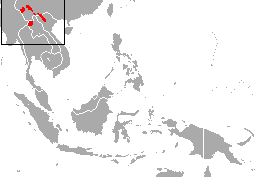 W
WThe black crested gibbon is an endangered species of gibbon found in China, Laos, and northern Vietnam, with four subspecies.
 W
WThe lar gibbon, also known as the white-handed gibbon, is an endangered primate in the gibbon family, Hylobatidae. It is one of the better-known gibbons and is often kept in captivity.
 W
WThe goliath frog otherwise known as goliath bullfrog or giant slippery frog is the largest living frog. Specimens can grow up to 32 centimetres (13 in) in length from snout to vent, and weigh up to 3.25 kilograms (7.2 lb). This species has a relatively small habitat range in Cameroon and Equatorial Guinea. Its numbers are dwindling due to habitat destruction and its collection for food and the pet trade.
 W
WThe hammerhead sharks are a group of sharks that form the family Sphyrnidae, so named for the unusual and distinctive structure of their heads, which are flattened and laterally extended into a "hammer" shape called a cephalofoil. Most hammerhead species are placed in the genus Sphyrna, while the winghead shark is placed in its own genus, Eusphyra. Many, but not necessarily mutually exclusive, functions have been postulated for the cephalofoil, including sensory reception, manoeuvering, and prey manipulation. Hammerheads are found worldwide in warmer waters along coastlines and continental shelves. Unlike most sharks, some hammerhead species usually swim in schools during the day, becoming solitary hunters at night. Some of these schools can be found near Malpelo Island in Colombia, the Galápagos Islands in Ecuador, Cocos Island off Costa Rica, near Molokai in Hawaii, and off southern and eastern Africa.
 W
WThe scalloped hammerhead is a species of hammerhead shark, and part of the family Sphyrnidae. Originally known as Zygaena lewini, its genus name was later changed to its current name. The Greek word sphyrna translates into "hammer" in English, referring to the shape of this shark's head. The most distinguishing characteristic of this shark, as in all hammerheads, is the 'hammer' on its head. The shark's eyes and nostrils are at the tips of the extensions. It is a fairly large hammerhead, but is still smaller than both the great and smooth hammerheads.
 W
WThe heath hen was a distinctive subspecies of the greater prairie chicken, Tympanuchus cupido, a large North American bird in the grouse family that became extinct in 1932. It is sometimes considered a separate species.
 W
WThe red ruffed lemur is one of two species in the genus Varecia, the ruffed lemurs; the other is the black-and-white ruffed lemur. Like all lemurs, it is native to Madagascar. It occurs only in the rainforests of Masoala, in the northeast of the island. It is one of the largest primates of Madagascar with a body length of 53 cm, a tail length of 60 cm and a weight of 3.3–3.6 kg. Its soft, thick fur is red and black in color and sports a buff or cream colored spot at the nape, but a few are known to have a white or pink patch on the back of the limbs or digits and a ring on the base of the tail in a similar color.
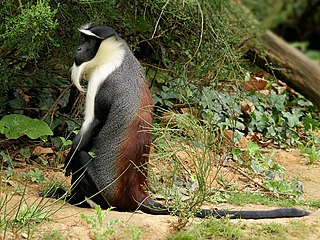 W
WThe roloway monkey is an endangered species of Old World monkey endemic to tropical West Africa. It was previously considered a subspecies of the Diana monkey. It is classified as Critically Endangered due to habitat loss and continued hunting for the bushmeat trade. The roloway monkeys are mainly arboreal species, for the most part inhabiting forests in Ghana and some reserves in South-Eastern Côte-D'Ivoire. More specifically studies have shown that the C. diana roloway is mostly concentrated in Tanoé forest because of their heavy threats to extinction.
 W
WThe Tonkin snub-nosed monkey or Dollman's snub-nosed monkey is a slender-bodied arboreal Old World monkey, endemic to northern Vietnam. It has black and white fur, a pink nose and lips, and blue patches around the eyes. It is found at elevations from 200 to 1,200 m on fragmentary patches of forest on craggy limestone areas. First described in 1912, the monkey was rediscovered in 1990 but is exceedingly rare. In 2008, fewer than 250 individuals were thought to exist, and the species was the subject of intense conservation effort. The main threats faced by these monkeys are habitat loss and hunting, and the International Union for Conservation of Nature has rated the species as "critically endangered".
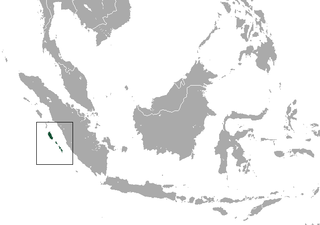 W
WThe pig-tailed langur, monotypic in genus Simias, is a large Old World monkey, endemic to several small islands off the coast of Sumatra in Indonesia. Its face is black, its fur is blackish-brown and it has a relatively short tail. It is a diurnal species, feeding in small groups in the rainforest canopy on leaves, and to a lesser extent, fruit and berries. Little is known of its natural history, but it is heavily hunted, its populations have been declining rapidly and the International Union for Conservation of Nature has assessed its conservation status as being "critically endangered". It has been included on a list of the World's 25 Most Endangered Primates.
 W
WThe passenger pigeon or wild pigeon is an extinct species of pigeon that was endemic to North America. Its common name is derived from the French word passager, meaning "passing by", due to the migratory habits of the species. The scientific name also refers to its migratory characteristics. The morphologically similar mourning dove was long thought to be its closest relative, and the two were at times confused, but genetic analysis has shown that the genus Patagioenas is more closely related to it than the Zenaida doves.
 W
WThe porbeagle is a species of mackerel shark in the family Lamnidae, distributed widely in the cold and temperate marine waters of the North Atlantic and Southern Hemisphere. In the North Pacific, its ecological equivalent is the closely related salmon shark (L. ditropis). It typically reaches 2.5 m (8.2 ft) in length and a weight of 135 kg (298 lb); North Atlantic sharks grow larger than Southern Hemisphere sharks and differ in coloration and aspects of life history. Gray above and white below, the porbeagle has a very stout midsection that tapers towards the long, pointed snout and the narrow base of the tail. It has large pectoral and first dorsal fins, tiny pelvic, second dorsal, and anal fins, and a crescent-shaped caudal fin. The most distinctive features of this species are its three-cusped teeth, the white blotch at the aft base of its first dorsal fin, and the two pairs of lateral keels on its tail.
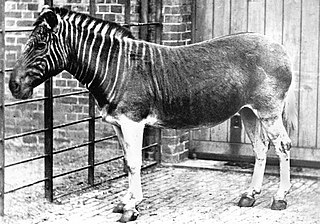 W
WThe quagga was a subspecies of the plains zebra that lived in South Africa until hunted to extinction late in the 19th century by European settler-colonists. It was long thought to be a distinct species, but early genetic studies have supported it being a subspecies of plains zebra. A more recent study suggested that it was the southernmost cline or ecotype of the species. The name comes from the Khoekhoe language and is thought to be derived from its call, which sounded like "kwa-ha".
 W
WThe Reunion giant tortoise was an extinct species of giant tortoise in the family Testudinidae. It was endemic to Réunion Island in the Indian Ocean.
 W
WThe Greenland shark, also known as the gurry shark, grey shark, or by the Kalaallisut name eqalussuaq, is a large shark of the family Somniosidae, closely related to the Pacific and southern sleeper sharks. The distribution of this species is mostly restricted to the waters of the North Atlantic Ocean and Arctic Ocean.
 W
WThe oceanic whitetip shark, also known as Brown Milbert's sand bar shark, brown shark, lesser white shark, nigano shark, oceanic white-tipped whaler, and silvertip shark, is a large pelagic requiem shark inhabiting tropical and warm temperate seas. Its stocky body is most notable for its long, white-tipped, rounded fins.
 W
WThe shortfin mako shark, also known as the blue pointer or bonito shark, is a large mackerel shark. It is commonly referred to as the mako shark, as is the longfin mako shark. The shortfin mako can reach a size of 4 m (13 ft) in length. The species is classified as Endangered by the IUCN.
 W
WThe spiny dogfish, spurdog, mud shark, or piked dogfish is one of the best known species of the Squalidae (dogfish) family of sharks, which is part of the Squaliformes order. While these common names may apply to several species, Squalus acanthias is distinguished by having two spines and lacks an anal fin. It is found mostly in shallow waters and further offshore in most parts of the world, especially in temperate waters. Spiny dogfish in the northern Pacific Ocean have recently been reevaluated and found to constitute a separate species, now known as "Pacific spiny dogfish", Squalus suckleyi.
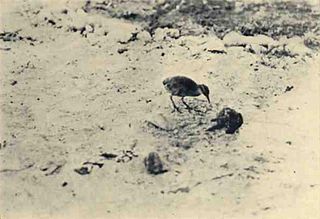 W
WThe extinct Wake Island rail was a flightless rail and the only native land bird on the Pacific atoll of Wake. It was found on the islands of Wake and Wilkes, but not on Peale, which is separated from the others by a channel of about 100 meters. It was hunted to extinction during the Second World War.